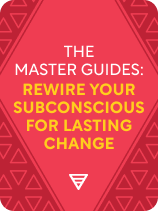

This article is an excerpt from the Shortform book guide to "The Master Guides: Rewire Your Subconscious for Lasting Change" by Shortform. Shortform has the world's best summaries and analyses of books you should be reading.
Like this article? Sign up for a free trial here.
How often do you operate on autopilot? Are you in control of your thoughts? How do they impact your routines, habits, and behaviors?
Your subconscious mind forms automatic routines to save mental energy. These are reinforced by feedback loops. But, you can retrain your subconscious mind to deliberately create new routines of your choosing.
Read more to learn how to change a routine by taking control of your thoughts and subconscious mind.
How to Change a Routine
Your subconscious mind permanently stores and resists any attempts to change your automatic routines. So, is changing your routines even possible? In sum, yes. We’ll look at advice on how to change a routine from Charles Duhigg, Napoleon Hill, Joseph Murphy, Maxwell Maltz, Nicole LePera, and Robert Maurer.
While you can’t delete unwanted automatic routines from your mind, Charles Duhigg (The Power of Habit) argues that, through self-awareness and conscious control, you can override them with new automatic routines that align with the habits you want to practice.
In The Law of Success, Napoleon Hill explains that your subconscious mind is malleable and adapts to reflect your habitual thoughts. This means that, by consciously controlling your habitual thoughts, you can retrain your subconscious mind into alignment.
Joseph Murphy (The Power of Your Subconscious Mind) clarifies why taking control of your thoughts can retrain your subconscious mind: Your conscious mind is active, and your subconscious mind is passive. Even though your subconscious mind creates your automatic routines, it can only follow the habitual conscious thoughts—or in other words, instructions—from your conscious mind.
Maxwell Maltz (Psycho-Cybernetics) adds that thoughts are subjective and may or may not be true. But, the more often you think specific thoughts, the more your subconscious mind accepts them as truth. He explains that this is because your subconscious mind can’t tell the difference between imagination and reality; it can only create automatic routines based on what you think or imagine to be true.
For example, if you habitually think you dislike exercise, your subconscious mind accepts this as truth, creating automatic routines that discourage physical activity. However, if you shift your habitual thoughts to enjoyment, your subconscious mind will eventually accept this new perspective as truth, creating automatic routines that encourage regular exercise.
Take Small Steps to Overcome Your Subconscious Mind’s Resistance
But, what about your subconscious mind’s resistance to change? Though changing your beliefs and behaviors will create discomfort, holistic psychologist Nicole LePera (How to Do the Work) suggests that you can minimize and overcome the discomfort by taking small daily steps to consciously address your thoughts and behaviors. Small daily changes will add up and eventually lessen your subconscious mind’s resistance to change. (Shortform note: Robert Maurer (The Kaizen Way) confirms that small daily changes are more likely to bypass your subconscious mind’s resistance to change. Each time you introduce a new change, you’ll demonstrate to your subconscious mind that you are safe, and you’ll eventually train it to expect and adapt to these changes.)
Additionally, LePera says that practicing daily conscious awareness will help you break free from the tendency to act on autopilot, thus making it easier for you to consciously choose your behaviors and routines.

———End of Preview———
Like what you just read? Read the rest of the world's best book summary and analysis of Shortform's "The Master Guides: Rewire Your Subconscious for Lasting Change" at Shortform.
Here's what you'll find in our full The Master Guides: Rewire Your Subconscious for Lasting Change summary:
- Why the only way to change a bad habit is to rewire your subconscious
- Methods from experts such as Tony Robbins, Charles Duhigg, and Nicole LePera
- Why it's so important to take time for physical relaxation






